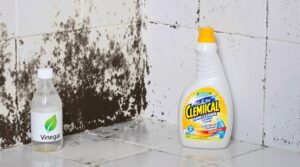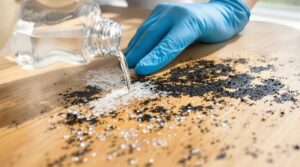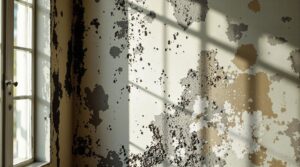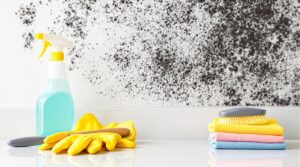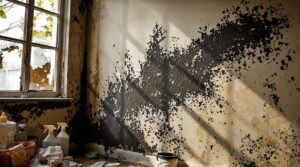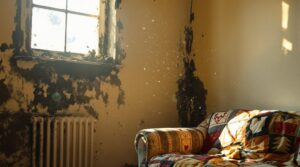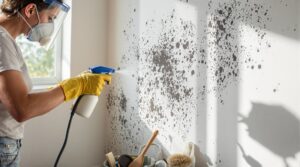DIY black mold removal is only safe for areas under 10 square feet when using proper safety equipment including N-95 respirators, goggles, and protective clothing. Health risks from toxic mycotoxins make professional remediation necessary for larger infestations, HVAC contamination, or hidden growth behind walls. Individuals with compromised immune systems, respiratory conditions, or other health vulnerabilities should avoid personal cleanup attempts. Understanding the full scope of safety protocols and warning signs guarantees appropriate handling decisions.
Key Takeaways
- DIY cleaning is only safe for small areas under 10 square feet, using proper safety equipment and EPA-registered cleaning products.
- Essential safety gear includes N-95 respirators, non-vented goggles, rubber gloves, and disposable coveralls with sealed gaps.
- Professional help is mandatory when mold exists in HVAC systems, behind walls, or covers areas larger than 10 square feet.
- High-risk individuals, including those with immune disorders or respiratory conditions, should avoid DIY mold cleaning entirely.
- Improper cleaning can release toxic spores into the air, potentially causing respiratory distress and other health complications.
Understanding Black Mold and Its Health Risks
Black mold, scientifically known as Stachybotrys chartarum, poses significant health risks to humans through its production of toxic compounds called mycotoxins. This microbial growth affects an estimated 70% of homes worldwide, with over 45 million buildings in the United States containing unhealthy mold levels.
Exposure to airborne spores can trigger various health complications, ranging from immediate allergic reactions to severe long-term effects. Common symptoms include respiratory distress, chronic inflammatory response syndrome (CIRS), and neurotoxic reactions.
Individuals with genetic predispositions, weakened immune systems, or pre-existing conditions face heightened risks. Research indicates that prolonged exposure may lead to cognitive impairment, mental health issues, and increased cancer risk, particularly liver cancer due to aflatoxins. The economic impact of mold-related infections reaches $5.6 billion annually in the United States. People exposed to mold often experience brain fog and confusion due to mycotoxins interfering with normal cognitive function.
Essential Safety Equipment for DIY Mold Cleanup
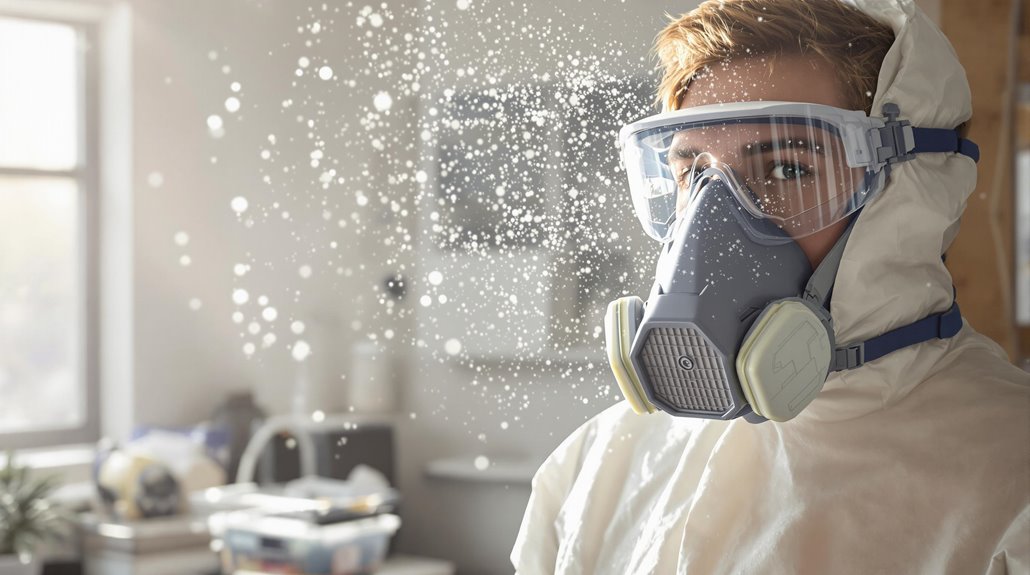
When conducting DIY black mold cleanup, specific protective equipment including respirators, gloves, goggles, and disposable suits must be worn to guarantee safety during the remediation process.
Safety gear requires regular inspection and immediate replacement if signs of wear, contamination, or decreased effectiveness become apparent, particularly with respirator filters and protective clothing that may accumulate spores.
Proper storage of reusable equipment in sealed containers and thorough decontamination after each use helps maintain the integrity of protective gear while preventing cross-contamination between cleanup sessions.
Using HEPA air scrubbers and proper ventilation systems during cleanup helps capture airborne mold spores and prevent their spread to unaffected areas.
Basic Protective Equipment Needed
Proper protective equipment serves as the first line of defense when attempting to clean black mold. Safety regulations require specific items to minimize exposure risks: non-vented goggles for eye protection, long rubber gloves made of natural rubber or synthetic materials like neoprene or nitrile, and disposable coveralls to prevent skin contact.
Equipment maintenance must include regular inspection of respirators, which should be rated N-95 or higher to filter out airborne particulates effectively.
For respiratory protection, a half-face or full-face respirator is essential, as it filters out 95 percent of mold spores and other harmful particles. All protective gear should create a complete barrier, with special attention to sealing any gaps around wrists and ankles using duct tape to prevent mold spore infiltration. When cleaning with quaternary ammonium compounds, proper ventilation becomes especially critical as these chemicals work by disrupting cell membranes.
When To Replace Gear
Maintaining the integrity of protective equipment requires systematic monitoring and timely replacement to verify continued safety during mold remediation.
Regular assessment of gear durability involves inspecting items after each use for visible damage, including tears, punctures, or compromised seals. Equipment cycles should follow manufacturer guidelines and OSHA standards for peak protection.
Critical replacement indicators include scratched goggle lenses, compromised respirator filters past their expiration dates, and gloves showing signs of deterioration.
Any protective gear that has direct contact with mold and cannot be adequately sanitized must be discarded. Proper cleaning and storage in well-ventilated areas between uses extends equipment life, while documentation of inspections establishes compliance with safety protocols and timely replacement of compromised items.
N-95 masks and coveralls provide essential protection against respiratory issues and skin reactions during black mold cleanup.
Proper Equipment Storage Methods
Safe storage practices form the foundation of maintaining protective equipment for DIY mold remediation.
Equipment organization requires storing items in sealed, labeled containers within a dry, well-ventilated area away from direct sunlight and hazardous materials.
Specific storage solutions include placing respirators in cool, dry locations, storing gloves in sealed containers to prevent contamination, and keeping eye protection in protective cases.
Protective clothing must be cleaned, dried, and stored separately to avoid cross-contamination.
A designated storage area guarantees easy access while maintaining equipment integrity.
Regular inspection of stored items is essential for identifying damage or wear.
Following manufacturer guidelines for cleaning and maintenance extends equipment life and provides optimal protection during mold cleanup tasks.
Proper storage ultimately preserves equipment effectiveness and promotes safety during remediation work.
When working in areas with relative humidity >60%, extra attention must be paid to drying and storing equipment to prevent mold growth on the safety gear itself.
When to Handle Mold Removal Yourself vs. Call Professionals
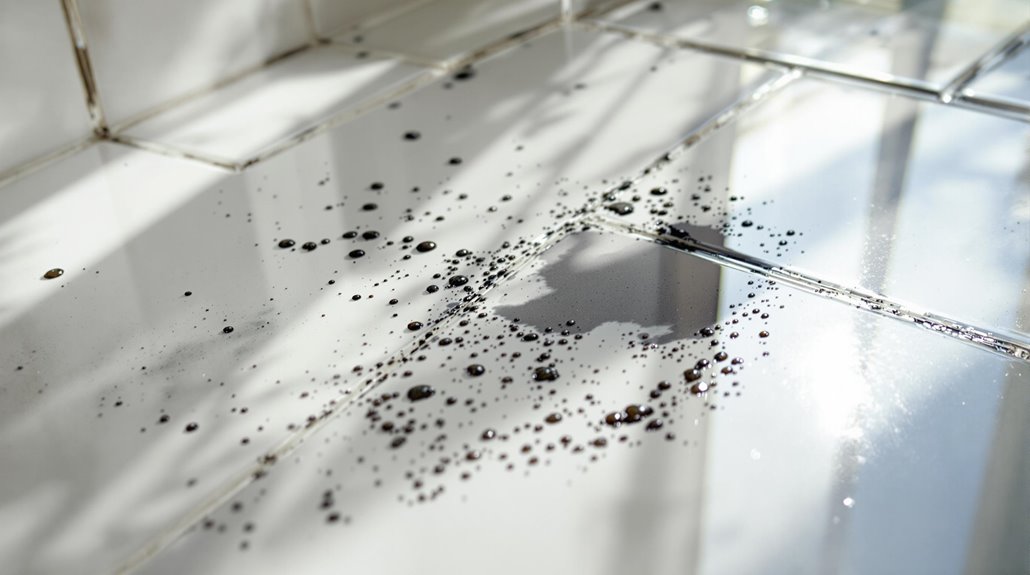
Determining whether to tackle mold removal independently or hire professionals depends on several critical factors, including the extent of contamination, surface type, and potential health risks.
For small infestations on nonporous surfaces, DIY surface cleaning methods can be effective when combined with proper moisture control measures. However, any affected area larger than 10 square feet requires professional intervention.
Professional assistance becomes essential when mold infiltrates porous materials, appears in multiple locations, or returns after DIY attempts.
Experts possess specialized equipment, proper containment methods, and technical expertise to address both visible growth and underlying causes. They can safely handle extensive infestations while preventing cross-contamination and ensuring complete remediation.
Additionally, structural damage, hidden mold growth, or post-water damage scenarios necessitate professional assessment and removal.
Maintaining indoor humidity levels between 30-50% is crucial for preventing future mold growth after remediation.
Step-by-Step Guide to Safe Mold Cleaning
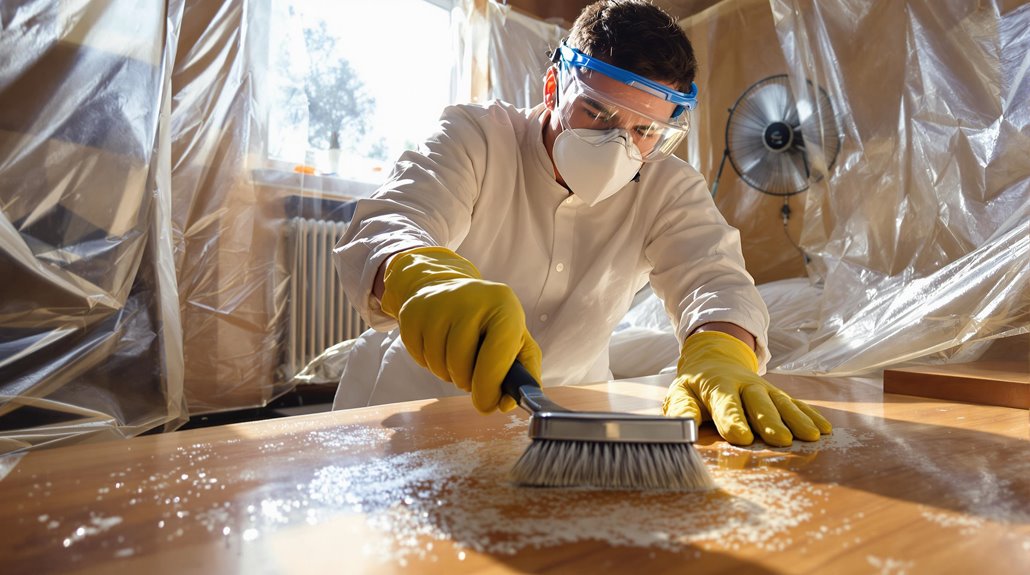
Successfully cleaning black mold requires a methodical, safety-conscious approach that begins with proper preparation and protective equipment. The first step involves surface preparation, which includes isolating the affected area with plastic sheets and establishing proper ventilation protocols through the use of fans and dehumidifiers.
Before initiating cleaning, individuals must don appropriate safety gear, including goggles, masks, and rubber gloves.
The cleaning process requires selecting suitable tools based on the surface type: metal brushes for wood surfaces, soft brushes for fabrics, and detail tools for corners.
Throughout the cleaning operation, maintaining adequate ventilation remains essential to prevent mold spore accumulation.
After cleaning, thorough drying of the area and proper disposal of cleaning materials are essential to prevent cross-contamination. Regular monitoring helps detect and address any recurring mold growth. For areas larger than 10 square feet, professional remediation services should be contacted for safe and effective removal.
Recommended Cleaning Solutions and Products
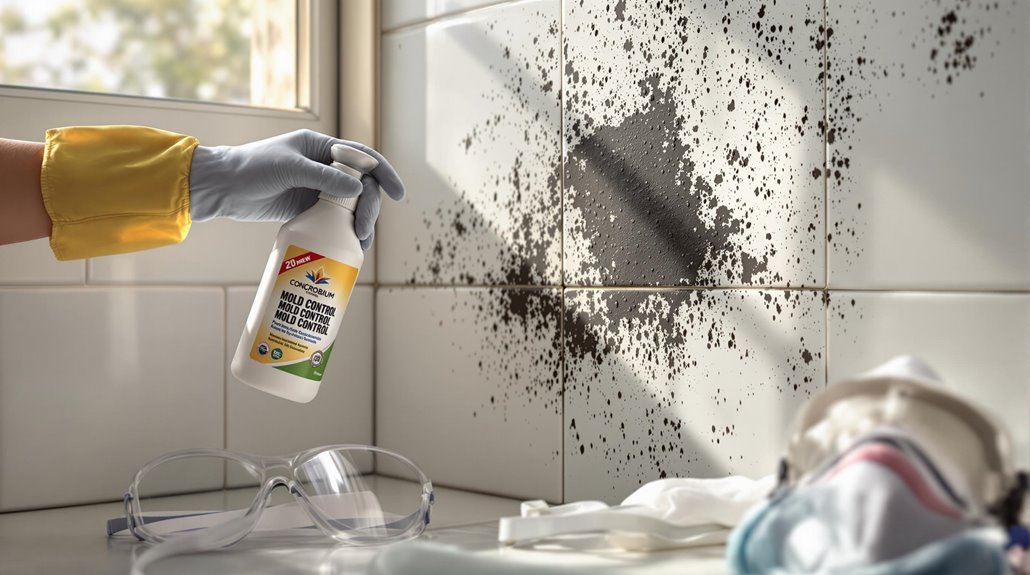
When addressing black mold, proper cleaning solutions and protective equipment are essential components of safe remediation.
EPA-registered products like Concrobium Mold Control and RMR-141 Disinfectant offer effective treatment options while meeting safety standards for residential use.
Personal protective equipment, including gloves, safety goggles, and appropriate respiratory protection, must be used in conjunction with these cleaning solutions to guarantee safe mold removal procedures.
Areas with poor ventilation conditions can accelerate mold growth and require more frequent cleaning and maintenance.
Safe Cleaning Solutions
Several proven cleaning solutions exist for addressing black mold, ranging from natural alternatives to commercial products. Natural solutions at safe concentrations include white vinegar, which effectively treats 80% of mold species when used undiluted, and 3% hydrogen peroxide solutions that require 15 minutes of contact time. Commercial options vary in strength and application method. Maintaining indoor humidity levels between 30-50% helps prevent mold growth from recurring.
| Solution Type | Application Method | Contact Time | Effectiveness | Safety Level |
|---|---|---|---|---|
| White Vinegar | Direct Spray | 60+ minutes | High (80%) | Very Safe |
| Baking Soda | Paste or Spray | Until Dry | Moderate | Very Safe |
| Hydrogen Peroxide | Direct Application | 15 minutes | High | Safe |
| Lemon Juice | Direct Application | 5-10 minutes | Moderate | Very Safe |
| Commercial Products | Per Label | Varies | High | Moderate |
Essential Protective Products
Safe and effective black mold removal requires specific protective equipment to minimize exposure risks and guarantee proper remediation. Essential items include a half-face respirator with particulate filters that provide 99.97% protection against airborne spores, addressing critical respiratory considerations during cleanup.
Protective eyewear with anti-scratch lenses and nitrile gloves offer necessary defense against exposure and contamination.
A disposable protective suit made from tear-resistant composite materials prevents skin contact with mold spores.
Proper ventilation requirements must be met through the use of dehumidifiers, fans, and air scrubbers to control airborne particulates. These tools work in conjunction with proper isolation techniques to prevent cross-contamination of unaffected areas.
Areas exceeding 10 square feet of mold contamination should be handled by certified remediation professionals.
When combined, these protective measures create a complete safety system for addressing black mold contamination.
Warning Signs That Indicate Professional Help Is Needed
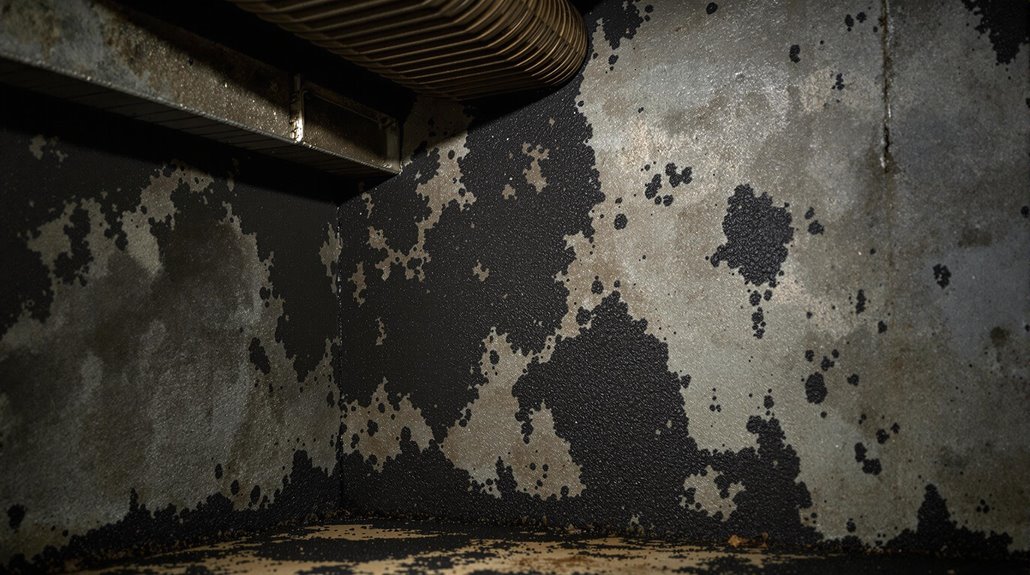
Identifying the warning signs that necessitate professional mold remediation is essential for protecting both property and health.
During the initial severity assessment, key emergency indicators include mold coverage exceeding 10 square feet, presence in HVAC systems, or growth behind walls and under flooring.
Persistent health symptoms, such as respiratory issues or allergic reactions, strongly signal the need for expert intervention.
Professional assistance becomes critical when mold repeatedly returns after DIY removal attempts or when growth occurs in multiple locations throughout the structure.
The presence of toxic species, particularly black mold, requires specialized handling and equipment.
Additional warning signs include difficulty accessing affected areas, inadequate ventilation in problem spaces, and the inability to effectively contain spores during cleanup procedures.
Preventing Future Mold Growth After Cleanup
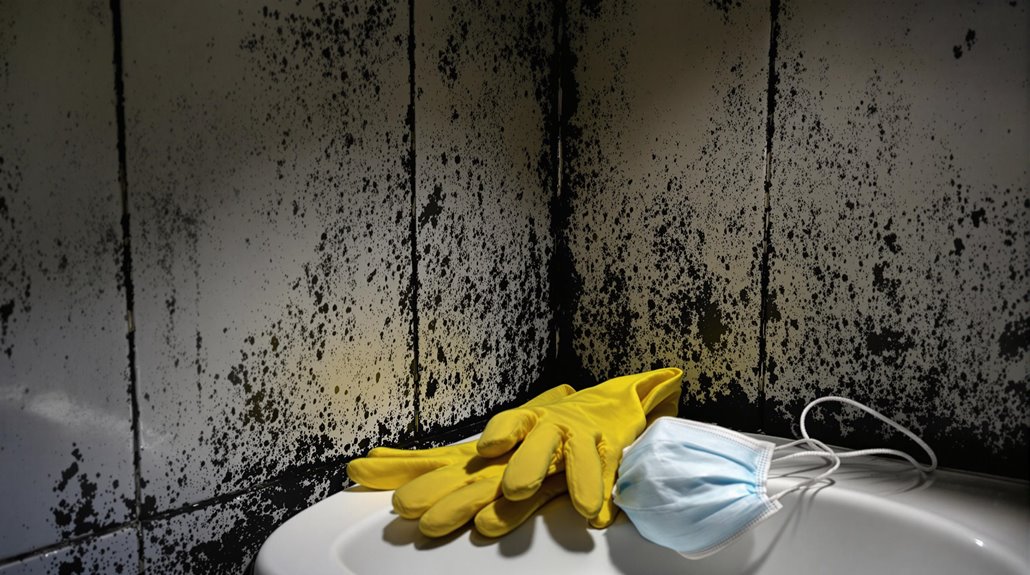
Effective mold prevention strategies are essential for maintaining a healthy indoor environment after initial cleanup efforts. Implementing thorough moisture control measures and ventilation improvements substantially reduces the risk of recurring mold issues. Key preventive actions include maintaining indoor humidity levels between 30-50%, promptly addressing water leaks, and ensuring proper insulation in attics and crawl spaces.
| Prevention Area | Primary Actions | Monitoring Needs |
|---|---|---|
| Moisture | Fix leaks immediately | Weekly inspections |
| Ventilation | Install exhaust fans | Daily air circulation |
| Humidity | Use dehumidifiers | Check levels regularly |
| Structure | Install proper insulation | Seasonal assessment |
Regular maintenance inspections, combined with proper moisture control systems and adequate ventilation, create an environment inhospitable to mold growth. Professional assessment may be necessary for large-scale prevention systems, particularly in areas with historical moisture problems or structural concerns.
Health Conditions That Rule Out DIY Mold Removal
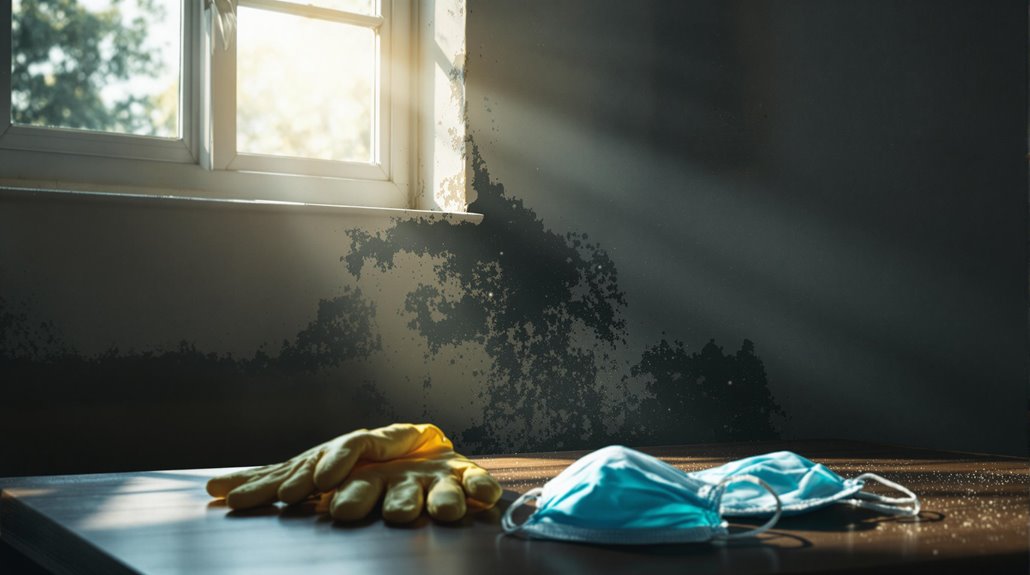
Certain medical conditions and vulnerabilities make DIY mold removal particularly hazardous for specific individuals. Those with immune disorders, including HIV, cancer patients, and individuals undergoing chemotherapy, face heightened medical risks during mold exposure. Infants, elderly adults, and pregnant individuals also have compromised immune responses that increase their susceptibility.
Respiratory conditions pose another significant contraindication for DIY mold removal. People with asthma, chronic bronchitis, or fungal respiratory infections should avoid direct contact with mold, as exposure can trigger severe reactions.
Additionally, those with neurological disorders, skin allergies, or eczema may experience adverse effects from mold spores. These health considerations underscore the importance of professional remediation services for affected individuals, particularly when dealing with areas larger than 10 square feet.
The Benefits Of Consulting A Public Adjuster
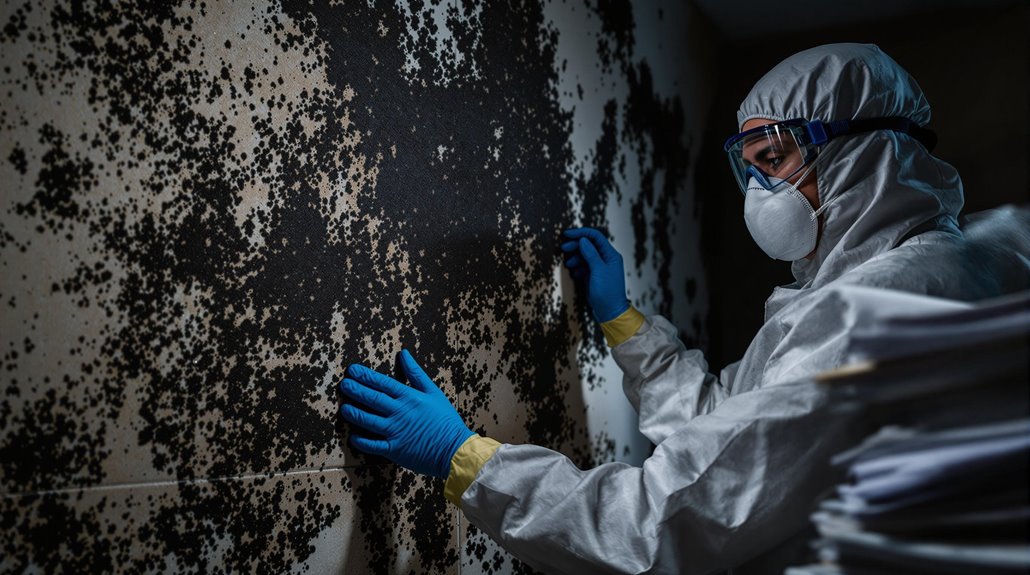
When dealing with mold damage claims, consulting a public adjuster provides expertise in handling complex insurance policies and guarantees objective assessment of property damage.
Public adjusters streamline the claims process by managing documentation, negotiations, and communications with insurance companies while advocating exclusively for the policyholder's interests.
Research indicates that professionally adjusted claims often result in settlements three to five times higher than self-managed claims, making public adjusters a valuable resource for maximizing insurance compensation.
Expertise In Insurance Claims
Insurance experts agree that consulting a public adjuster can substantially enhance the outcome of mold-related insurance claims. These licensed professionals possess extensive claim expertise in interpreting complex policy provisions and understanding intricate claims procedures. Their specialized knowledge enables them to identify often-overlooked damage aspects that property owners might miss.
Through effective insurance advocacy, public adjusters navigate the complexities of policy interpretation and negotiate with insurance carriers to maximize settlements. They understand common insurance company tactics and strategies used to minimize payouts, allowing them to counter these approaches effectively.
Their professional assessment and documentation skills guarantee that all claimable damages are properly identified and substantiated, leading to more thorough and accurate claim submissions that better serve the policyholder's interests.
Objective Damage Assessment
Professional damage assessment conducted by public adjusters provides property owners with a thorough and unbiased evaluation of mold-related damages. These specialists perform complete inspections that include surface measurement of affected areas and coordinate with experts for laboratory testing to verify the extent of contamination.
Public adjusters document all findings through detailed photographs, videos, and professional estimates, ensuring no damage goes unnoticed.
Their assessment encompasses both visible deterioration and underlying causes, such as water intrusion or ventilation issues. This methodical approach prevents underestimation of damages and creates a complete picture of remediation requirements.
Streamlined Claim Process
Through the expertise of public adjusters, property owners can substantially streamline their mold-related insurance claims process while maximizing potential settlements. These professionals facilitate claim acceleration by managing thorough documentation, timely filing procedures, and proactive communication with insurance carriers.
Public adjusters employ systematic payment tracking methods to guarantee proper disbursement of funds while handling complex paperwork requirements. Their industry knowledge enables them to navigate policy stipulations effectively, preventing potential claim denials and delays. They serve as skilled negotiators who advocate for fair settlements based on detailed damage assessments and policy provisions.
Higher Claim Payouts & Settlements
Experience demonstrates that engaging a public adjuster substantially increases the likelihood of securing higher insurance claim settlements for mold-related damages.
These professionals leverage their expertise in policy interpretation and settlement negotiations to maximize compensation for property owners.
Through extensive claim documentation and thorough damage assessments, public adjusters identify often-overlooked impacts of mold infestation, ensuring all legitimate damages are included in the claim.
- Professional evaluation of hidden mold damage and associated structural impacts
- Detailed documentation of remediation costs and property restoration requirements
- Strategic negotiation with insurance carriers based on policy coverage
- Expert interpretation of insurance policy terms and exclusions specific to mold damage
Public adjusters work on a contingency basis, aligning their interests with achieving maximum settlement outcomes while relieving property owners of complex claim management responsibilities.
About The Public Claims Adjusters Network (PCAN)
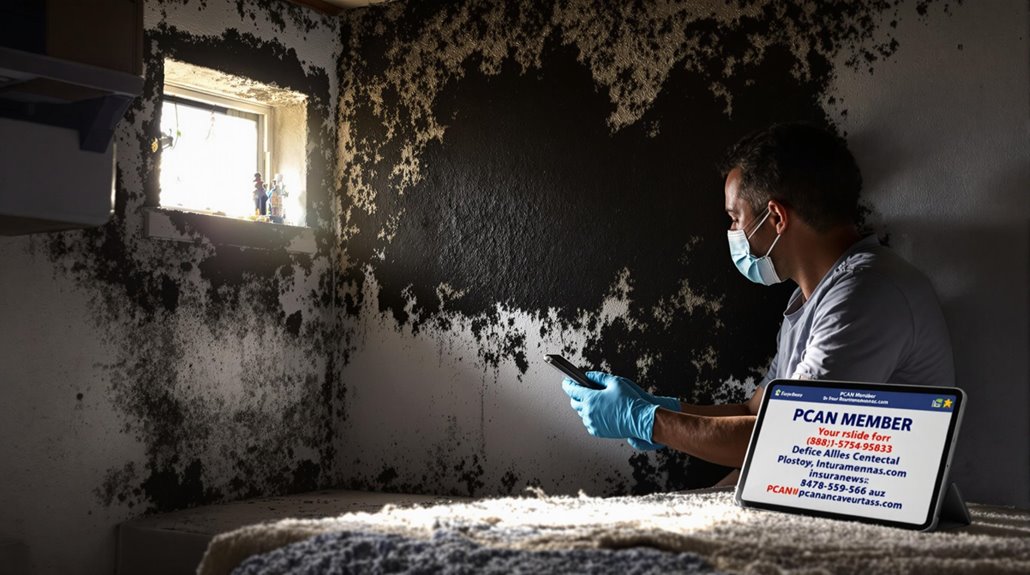
The Public Claims Adjusters Network (PCAN) represents a coalition of licensed professionals who specialize in advocating for policyholders during insurance claims processes. The Network Structure encompasses independent adjusters operating across multiple jurisdictions, supported by Global Partnerships that enable thorough claim management services worldwide.
| Service Component | Operational Function |
|---|---|
| Policy Analysis | Detailed interpretation of coverage terms |
| Damage Assessment | Professional evaluation of loss extent |
| Settlement Negotiation | Strategic advocacy for maximum payouts |
| Claims Management | End-to-end process coordination |
PCAN members provide expertise in policy interpretation, damage assessment, and claims settlement negotiations. Their services include thorough support from initial loss notification through final resolution, ensuring policyholders receive professional representation throughout the claims process.
Frequently Asked Questions
Can Black Mold Spread to Other Rooms Through Air Conditioning Systems?
Black mold aggressively infiltrates buildings through HVAC spore circulation, spreading rapidly between rooms when filter maintenance is neglected. Air conditioning systems serve as primary highways for widespread contamination throughout structures.
How Long After Water Damage Does Dangerous Black Mold Typically Appear?
Dangerous black mold follows a rapid growth timeline, typically appearing within 24-48 hours after water damage occurs. The extent of colonization depends on moisture duration and environmental conditions.
Does Homeowner's Insurance Typically Cover Professional Mold Remediation Costs?
Behind closed doors, homeowner's insurance typically covers mold remediation when caused by sudden, covered water damage, subject to coverage exclusions, deductible requirements, and specific policy limits, often capped around $10,000.
Can Pets Get Sick From Exposure to Black Mold?
Black mold exposure can cause severe health issues in pets, including respiratory infections and mold allergies, leading to symptoms like coughing, wheezing, skin irritation, gastrointestinal problems, and neurological complications.
What Temperature and Humidity Levels Prevent Black Mold From Growing?
Like a sleeping dragon, black mold remains dormant when temperatures stay below 77°F. Ideal prevention requires maintaining humidity levels between 30-60% and keeping temperatures outside the 77-86°F growth range.
References
- https://www.cdc.gov/mold-health/about/clean-up.html
- https://www.puroclean.com/oak-park-il-puroclean-oak-park/blog/is-it-safe-to-clean-black-mold-yourself/
- https://www.envirobiomics.com/is-cleaning-black-mold-yourself-safe-consider-these-factors-before-making-a-decision/?v=47e5dceea252
- https://www.cleanerguys.com/is-it-safe-to-clean-black-mold-yourself/
- https://epi.dph.ncdhhs.gov/oee/mold/precautions.html
- https://www.airoasis.com/blogs/articles/health-effects-black-mold-stachybotrys-chartarum
- https://miamimoldspecialists.com/black-mold-problems-in-the-world-2023/
- https://atirestoration.com/blog/toxic-black-mold-vs-black-mold/
- https://www.niehs.nih.gov/sites/default/files/health/materials/mold_508.pdf
- https://www.taskrabbit.com/blog/the-complete-guide-to-diy-mold-removal
